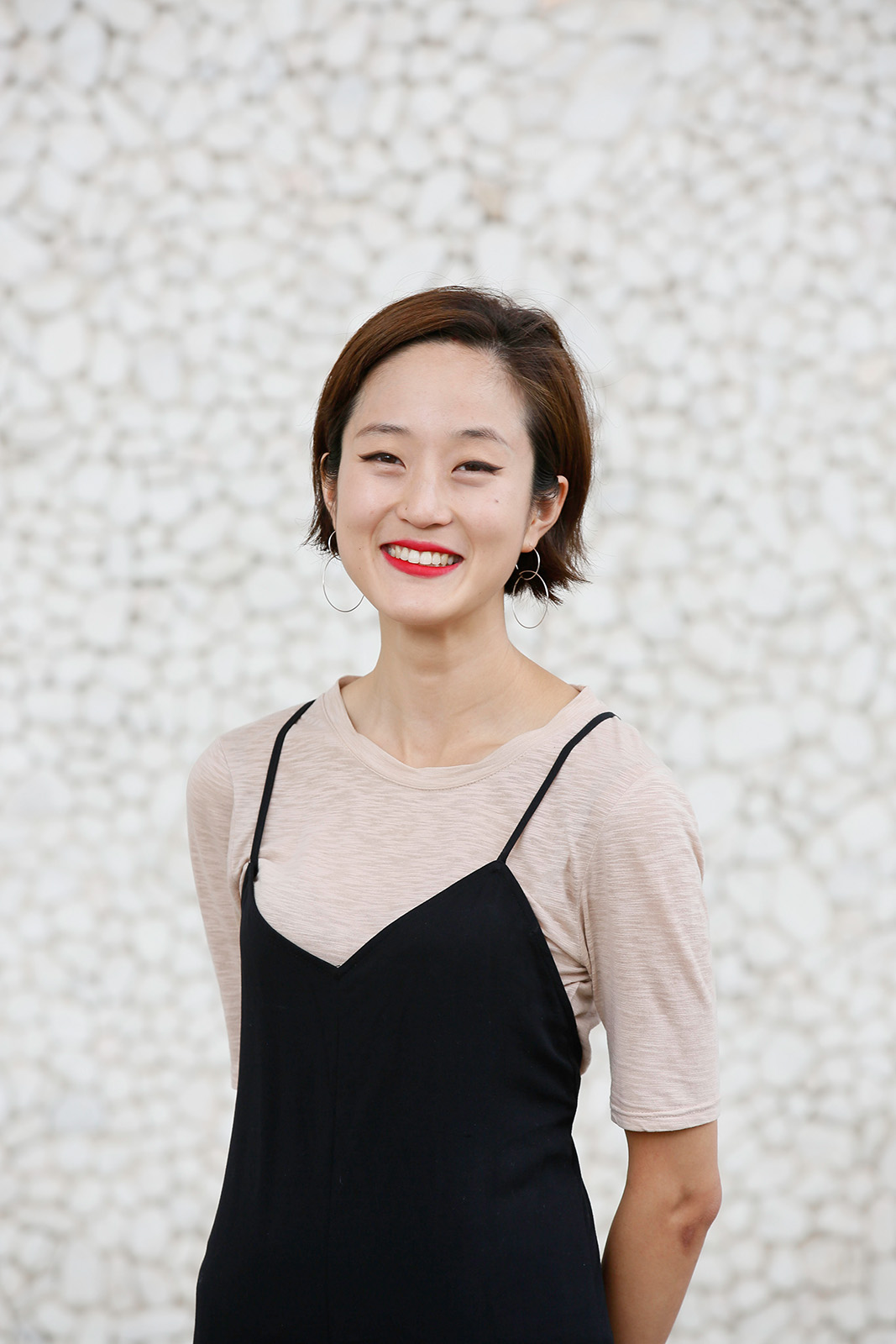Alumna wins award for emerging artists by breaking theater convention

Hana Kim, a UCLA alumna, recently won the Center Theatre Group’s $10,000 Richard E. Sherwood Award for her work as a projection and set designer. The award honors emerging artists in the Los Angeles theater community who exhibit exceptional talent and push the boundaries of their field. (Courtesy of Ryan Miller/Capture Imaging)
By Polina Cherezova
Feb. 19, 2018 11:53 p.m.
Hana Kim’s production designs range from digital forest nymphs to kaleidoscopic collages of hands and piano keys.
The 2012 UCLA MFA alumna was awarded the Center Theatre Group’s $10,000 Richard E. Sherwood Award on Jan. 29 for her work as a projection and set designer. The award honors emerging artists in the Los Angeles theater community who exhibit exceptional talent and push the boundaries of their field. Kim won the award for her storytelling designs, which integrate video projection technology into the physical space of the set. Her experience as an immigrant from South Korea inspired her to experiment with new technologies to build a multisensory theater experience, Kim said.
“The fun of doing (digital design) is creating a visual image to create another language,” Kim said. “It is kind of like the principle of cinematic storytelling.”
Kim emerged as a finalist for the Sherwood Award after her designs were selected by a group of theater professionals. Ann Closs-Farley, the recipient of the 2010 Sherwood Award, was involved in the selection process of the 2018 winner.
“(Kim’s) work comes from a deep reflective place that I identify with,” Closs-Farley said.
Kim said her experiences as an immigrant greatly fuel her artistic inspiration because moving to a new place made her hyperaware of minute details in her new surroundings, which fostered a sense of constant curiosity. Although it was challenging to adjust to an unfamiliar environment, Kim said moving to Los Angeles from South Korea as a 23-year-old led her to recreate the multisensory experience of discovering a new place in her sets by blurring the lines between the real and the imaginary. For example, for the set of “Fallujah,” an opera about the Iraq War, Kim created a video projection that juxtaposed images from the soldiers’ minds with the actualities of war, merging reality with imagination.
In 2014, Kim worked on “The Ugly One,” a satirical play about a man who undergoes cosmetic surgery to alter his appearance. To represent the status he gains after he becomes conventionally attractive, Kim chose to create transitional moving set components, visually indicating shifts in power. She created a surgical operation room which moved across the stage from right to left as a metaphor for power shifting from one person to another.
Jason H. Thompson, previously an adjunct professor of projection design at UCLA, first met Kim when she took his Photoshop class as a graduate student. At the end of the first class, Kim showed Thompson her Adobe After Effects animation project in which a pair of hands open up to reveal a rainbow. Thompson said Kim’s current designs, just like her animation piece, constantly include unexpected yet beautiful surprises.
In her projection design for “Refractor Piano Concert,” a 2017 interactive visual concert, Kim took the live feed of the performer’s hands on a piano and turned it into a kaleidoscope of hands and piano keys that projected above the live pianist. The effect was an unexpected perspective for the audience members, who likely anticipated the conventional visuals of just the pianist’s hands on the keys, Thompson said.
“Right now in theater, we are finding ways to create an experience that feels immersive and interactive,” he said. “If you do it really well, the visual becomes like the character of the piece and it becomes vital to the storytelling.”
Kim said an integral part of pushing the boundaries in theater design involves merging the physical set with advanced video projection technology such as media servers, interactive sensors and live-feed cameras. In one of her recent works, “The Eva Trilogy,” Kim created a video of a nymph that she projected onto the set of a forest, and allowed real actors on the stage to interact with the digital character by reacting to its movements.
The nymph represents the protagonist’s dreams: Through its interaction with the physical forest set, the nymph symbolizes how the imaginary virtual world can merge with the real physical world.
In her future designs, Kim said she hopes to create similar visual metaphors and tell better stories by incorporating technological elements, such as virtual reality and artificial intelligence, into more conventional set designs.
“I want to support the production visually and also sensually,” Kim said. “And to achieve that, I think new media helps and it’s exciting. … It can provoke you in an unexpected way.”


